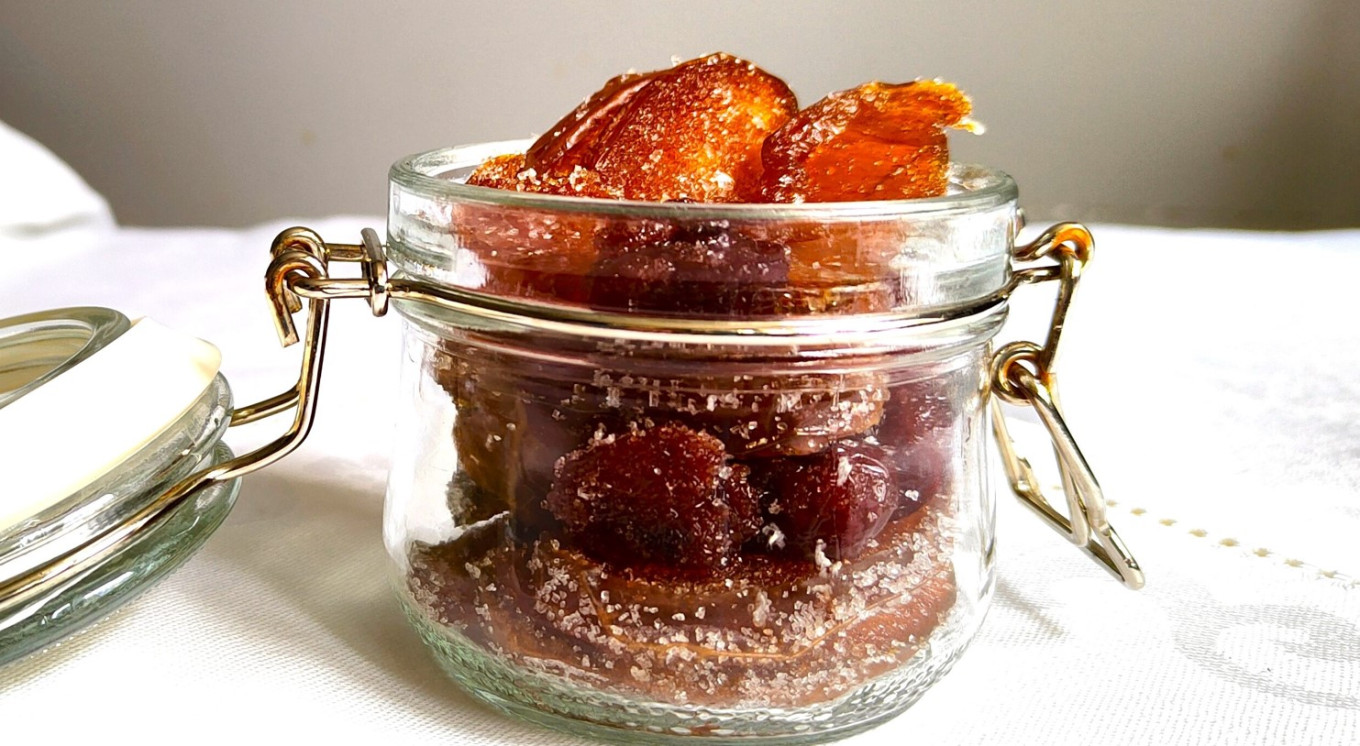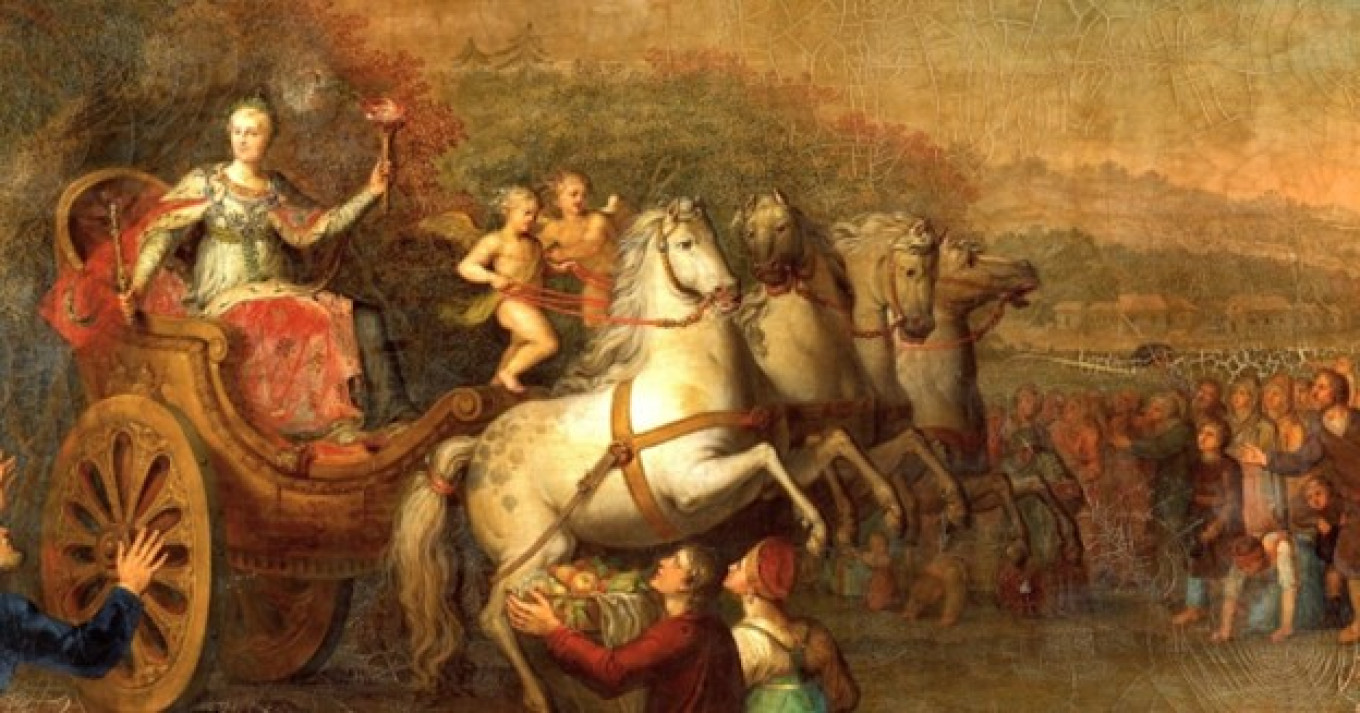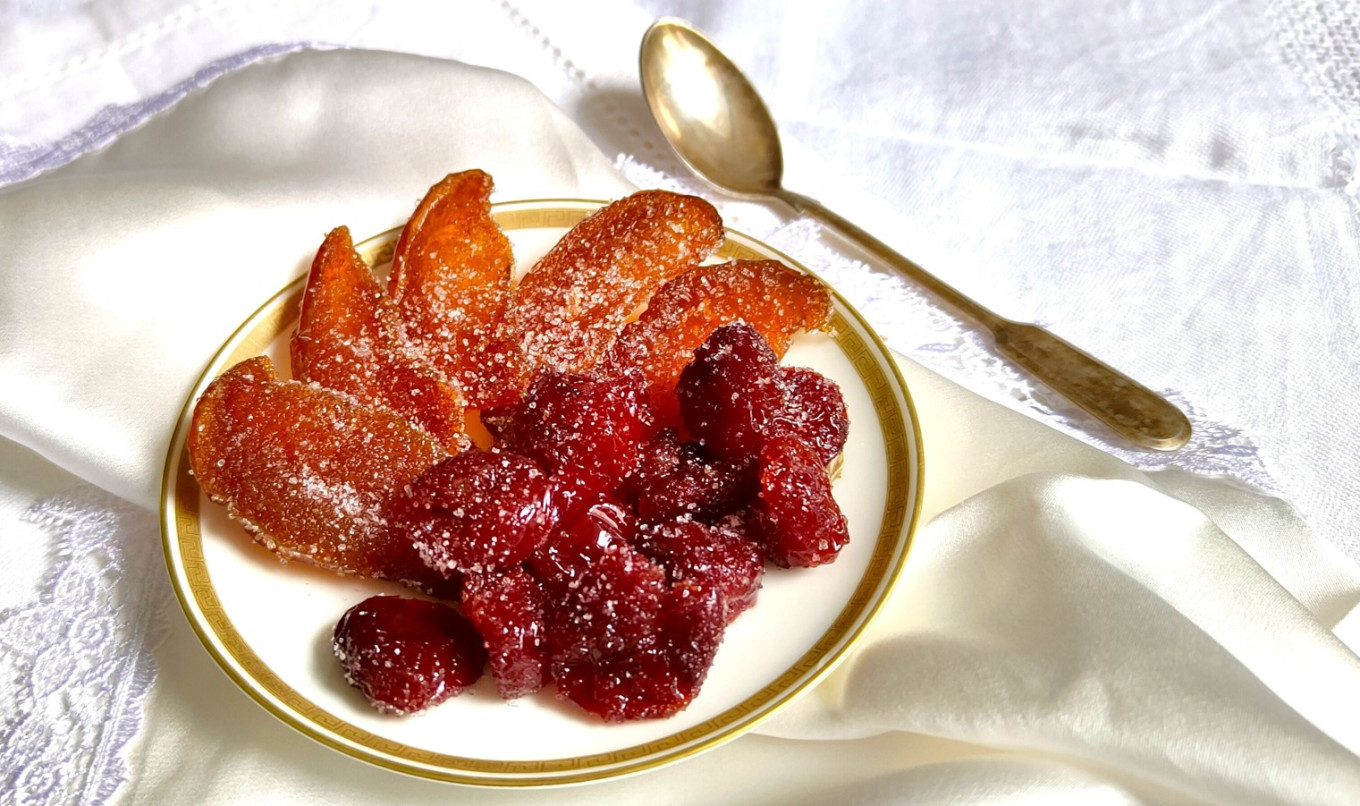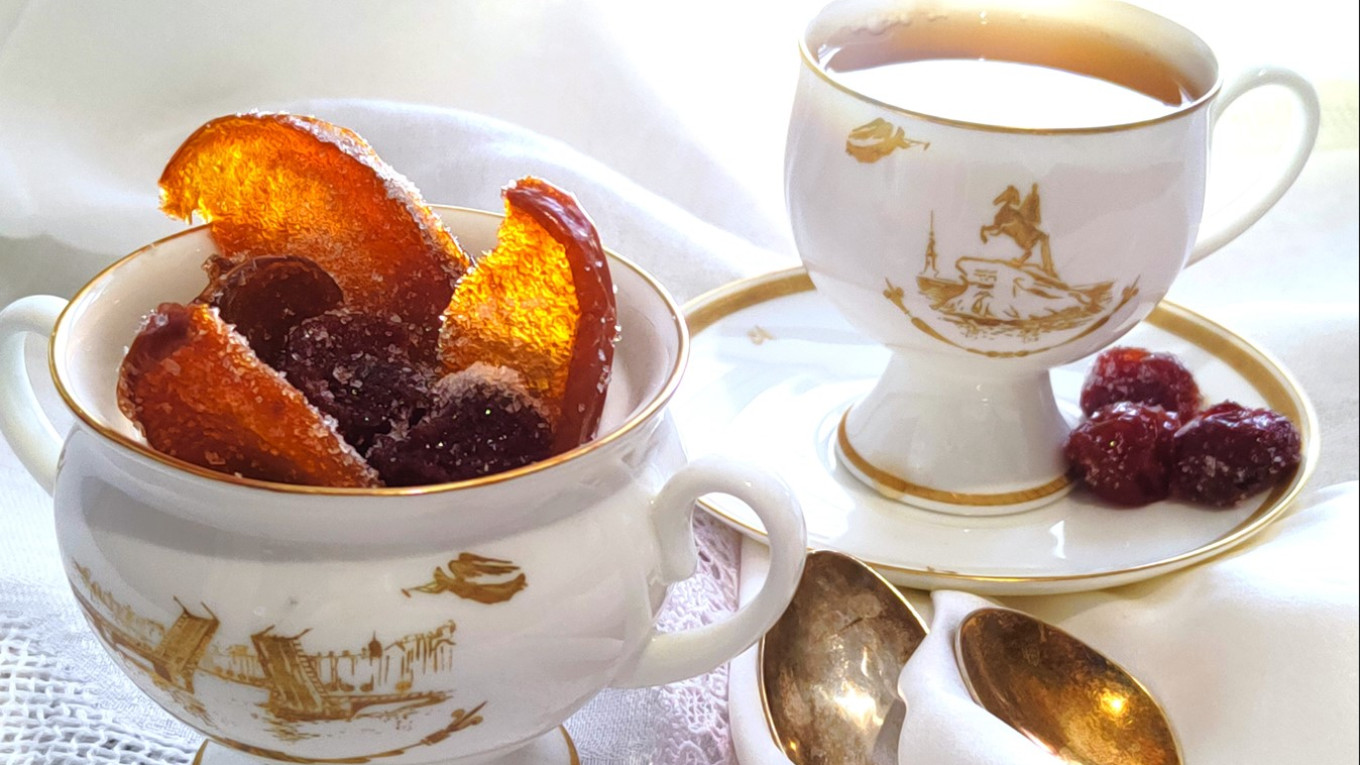“What do you mean, jam from Kyiv? From where?” a patron of a Moscow restaurant shouted aggressively at the waiter. “Yes, it’s from the time of Catherine the Great,” the waiter said calmly. “Well, if that’s the case, all right then…” the diner muttered, mollified.
That scene really happened about five years ago. Even then, Putin's patriots were already suspicious of anything Ukrainian. Today, it's hard even to imagine something like that in Moscow. The restaurant owner would be lucky to get off with a fine and not be charged for justifying Nazism. In Russia today, even jam is the enemy if it is Ukrainian.
Meanwhile, Kyivan dry jam survived the Russian Empire and the Soviet Union, and it will certainly survive Putin’s kleptocracy, too. We think that Ukrainians could add it to borscht on its UNESCO List of Intangible Cultural Heritage.
Hard candies, candied fruits, fruit jellies and jellied lemon slices — all these sweets have an almost forgotten ancestor - at least in Russian mass culture. It's securely in place in its historical homeland. The culinary ancestor of all these fruit confections is Kyivan dry jam.
The predecessors of today’s sweets were candied fruits, which from time immemorial were a treasured delicacy. They keep for a long time, portions are small, and they are easy to make. In Russia this delicacy has been made for at least half a millennium. The biographer of Countess Catherine Golovkina's (née Naryshkina), who lived in the second half of the 18th century described it this way: "The desserts were: sugars, hard candies and marzipan. Fruits included watermelons, candied fruits, sheptala (dried apricots) and dried Hungarian plums."

Even though the word for candied fruit in Russian came originally from the German in the 17th century and remained for several centuries, cooks were already making dry citrus jam. These were pieces of fruit that were boiled several times in sugar syrup until they reached the point of almost amber transparency. The first mention of them dates back to the 13th century: the Chronicles tell the story of how the Lithuanian prince Jogailo was served dry jam at his wedding table.
Later Catherine Ithe Great fell in love with this delicacy. In 1787 she made a trip to the southern regions of Russia, now memorable because of the "Potemkin villages" erected by the Most Serene Prince for the Empress. He ordered the construction of sham huts along the road and brought in peasants from all over to show the ruler the prosperity of the new provinces.
After the trip there was even a kind of guide-book published called “Travels of Her Imperial Majesty in the Southern Lands of Russia, Taken in 1787.” It describes many curiosities and places of interest that Catherine the Great saw on her trip.

The Empress simply had to visit Kyiv, the Mother of Russian cities. She was accompanied by a huge retinue of important people and servants: footmen, cooks, maids and a Swiss confectioner by the name of Bailli, who happened to come to the Russian court and then traveled with them. The Ukrainian historian Nikolai Zakrevsky (1805-1871) tells of what turned out to be a fortunate accident.
During his stay in Kyiv, he writes, this creator of confections was strolling in the spring thaw on the treacherous sidewalk of Podol in Kyiv when he had the misfortune to slip and break his leg. Although the Empress had left, he had to stay in Kyiv to recover. The citizens of Kyiv, thinking he was an important person at the court, entertained him in every way over the weeks of his convalescence. The mayor put him up in his country house, which had the finest gardens. The Swiss confectioner was recovering slowly, and out of boredom he asked for some flavorful berries — field and garden strawberries, cherries, plums, and apricots. Balli also learned from the locals a recipe for an old dish made from these berries. He found these pieces of candied fruit very much to his taste, and his foreigner’s curiosity combined with confectionary experience led him to experiment with the recipe himself.

The Empress had long since returned to St Petersburg when the recovering Swiss sent to the capital several boxes of dry jam he’d made himself. Before this gift he was known in the court, although not very well. But perhaps because of the delicious flavor or perhaps because of the intriguing foreign chef, suddenly court connoisseurs were very impressed by the sweets. They decided that Kyivan dry jam was not at all inferior to foreign jams, even the most expensive ones. Catherine ordered a delivery of jam in St. Petersburg in the fall and served it at the royal table. Dignitaries and courtiers followed the example of the autocrat. And so carriages and wagons brought this sweet from Kyiv for many years to come.
Its fame had not disappeared a century later. The Russian writer Olimpiada Shishkina (maid of honor to the wife of Emperor Nicholas I) described it as follows in 1848: "We bought a pound of dry jam made of various berries and fruits in Kyiv for one silver ruble. It seemed quite expensive to us until we discovered its perfection. We savored it while traveling in the Crimea in July. And even after we arrived in the middle of September it had not dried out from the heat nor lost its flavor from the dampness. No St. Petersburg sweets could have withstood such conditions.”
It is a shame that today this jam is only made by experienced cooks — this magnificent example of historical cuisine deserves much more attention.

Kyivan Dry Jam
Note: You need to start cooking at least 3 days before serving.
Ingredients
- 1 kg (2.2 lb) apples (preferably sweet varieties)
- 3 Tbsp water (or 50/50 clarified apple juice* and water)
- 250 g (scant 9 oz or 1 c and 3 Tbsp) sugar
- fine sugar for sprinkling
*Clarified apple juice is transparent, no-sugar-added juice with no pulp.
Instructions
- Cut apples into slices (fairly thick) and remove core (peel apples if desired). Put them in a pot for making jam.
- Bring water (or apple juice and water) to a boil and add sugar. Boil until the sugar has dissolved.
- Pour the hot syrup over the apples and leave for 3 hours.
- Bring the jam to a boil and simmer for 10 minutes, then take it off the heat and leave it for 8 hours (or overnight).
- Once again bring it to a boil and cook for 10 minutes over low heat, then take it off the heat and leave it for 8 hours.
- Bring it back to a boil and simmer for 10 minutes. Take out the hot apples with a spider strainer or slotted spoon. Hold and let the syrup drain.
- Heat the oven 100 ˚C (212 ˚F). (In the old days, apples or other fruits soaked in syrup were spread on boards and dried in the sun for several days.)
- Arrange the apple slices in a single layer on a baking paper-lined baking tray and place in the oven for 3 hours.
- Take the dry jam take out of the oven, sprinkle with granulated sugar.
Kyivan dry jam is a great way to preserve any berries or fruit with just sugar and a drying wrack. You can follow this recipe and use apples, pears, cherries, plums.
These dried and candied berries can be stored for a long time without any special conditions or air-tight containers.
A Message from The Moscow Times:
Dear readers,
We are facing unprecedented challenges. Russia's Prosecutor General's Office has designated The Moscow Times as an "undesirable" organization, criminalizing our work and putting our staff at risk of prosecution. This follows our earlier unjust labeling as a "foreign agent."
These actions are direct attempts to silence independent journalism in Russia. The authorities claim our work "discredits the decisions of the Russian leadership." We see things differently: we strive to provide accurate, unbiased reporting on Russia.
We, the journalists of The Moscow Times, refuse to be silenced. But to continue our work, we need your help.
Your support, no matter how small, makes a world of difference. If you can, please support us monthly starting from just $2. It's quick to set up, and every contribution makes a significant impact.
By supporting The Moscow Times, you're defending open, independent journalism in the face of repression. Thank you for standing with us.
Remind me later.







